A Follow-Up to MP3.com
- Posted by mariteaux on February 2nd, 2020 filed in Sperging
- Comment now »
Post-blog archival update! I wrote this in 2020, when it was thought that no archives of the MP3.com library were ever saved. Turns out, not true! Some several hundred thousand MP3s, I've heard anywhere from 250,000 to 490,000, were saved. I originally thought this was Alexa Internet's doing, since they saved the skeleton archive, but I've since read (on the Archive Team's wiki) that John Gilmore, one of the founders of the EFF, was behind the crawl. (He apparently also saved IUMA, another period collection of indie bands.)
Either way, the archive was only made available in September 2021 and was transferred to the Internet Archive in 2022. This makes the melodrama of my post a little amusing in hindsight. I have had good luck pulling files from obscure artists out of the crawl, so give it a shot for the band you're looking for. Thanks to Cody Smith for bringing this all to my attention.
Folks are still finding these essays, there's a lot more interest in MP3.com than there was when I wrote these, and I still find MP3.com immensely fascinating, so I'm gonna use the space to shout out a few cool MP3.com-related resurrection projects:
- The MP3.com 2003 Project—which attempts to restore the skeleton archive with CSS and related assets (no music yet). If you're trying to find something from a band, use this first to find the band's artist page, then cross-check the song names in the archive.
- Random MP3.com Playlist—one from inside Somnolescent, courtesy of dcb, this provides you with eight (refresh for more) random MP3s from the archive. You never know what you'll get!
Enjoy! Thanks for reading!
Mid-last month, I wrote about the death of a very old site called MP3.com. I got most of what I wanted to say out in that post, but at the time, there was still a lot I didn’t know about the service and some of its lesser functionality. I figure a follow-up is in order, and I’d also like to write a bit about some of the artists I showcased in that post to give you a better idea of the kind of people who you’d find on there.
DAM (Digital Automatic Music) Discs
MP3.com would let bands sell their material as on-demand CD-Rs called “digital automatic music” discs. From what I can gather, the earliest DAM discs dropped in 1999 or so and all used very generic packaging, with most of the “artwork” consisting of the MP3.com logo. Later discs allowed for at least a custom front cover, though the back and inlay were always a standard MP3.com template with basic Arial text.
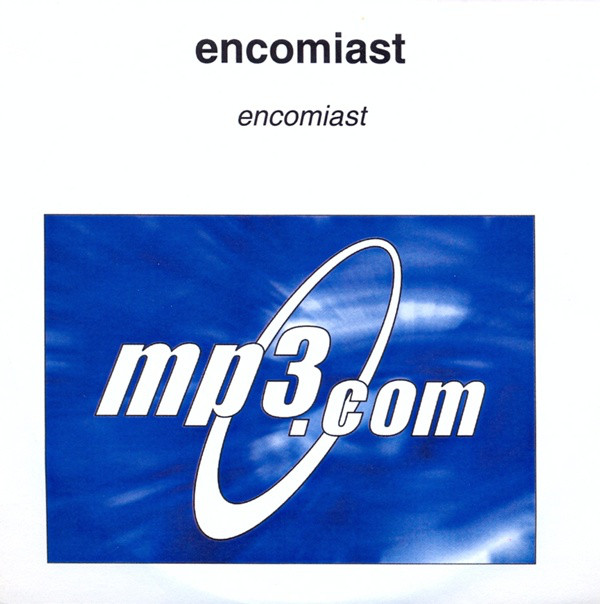
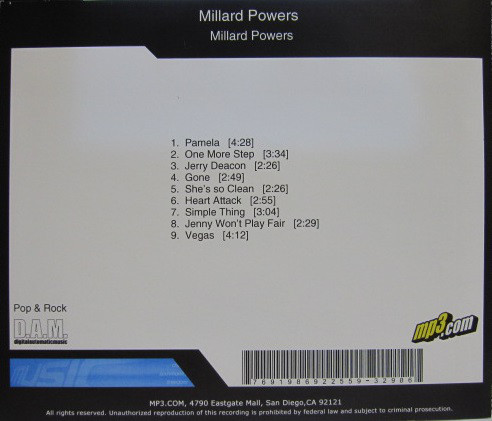
These discs were mixed mode CDs that contained the MP3s of the album in question (of course), a self-contained Flash MP3 player (yes, Macromedia Flash!), and, most amusingly, the same 128kbps MP3s burned as CDDA. So yes, while they’d play in a normal CD player, they would sound identical to the streaming “hi-fi” copy. That is, not very good. I can’t tell if this was someone simply jabbing or what, but this Slashdot thread makes reference to the old Xing MP3 encoder in relation to these discs.
MP3.com seems to burn their DAM CD’s from the exact same MP3 files that you can download, which is really unfortunate
This has been my biggest disappointment with the DAM CDs. There is a lack of quality control from mp3.com, and a lack of technical knowledge on the part of the musicians. An mp3 can sound great, but not if it’s encoded with a xing encoder at 128kbps.
I ordered a CD a few months ago, and it was impossible to make out the lyrics on some of the songs because of the low encoding quality. When I sent email to the band, one of the band members wrote back and told me that they had converted to and from mp3 when they bounced the songs around between band members, and some of the songs had been decoded, manipulated, and encoded again half a dozen times. He didn’t realize how much of an effect this had on the finished product.
I think this goes to show you just how ragtag MP3.com could be. People in their garages, with no audio engineering background to speak of, were putting shit online, as were industry veterans and everything in between. It was a hell of a crowd.
If you’re wondering, Discogs has about the most complete (but still not totally complete) selection of DAM discs I’ve been able to find. I don’t think we’ll ever know the full extent of what was available on the service, but at least we have a line on some of the discs themselves. I think they’re neat as a historical curiosity on their own, let alone if the music’s any good.
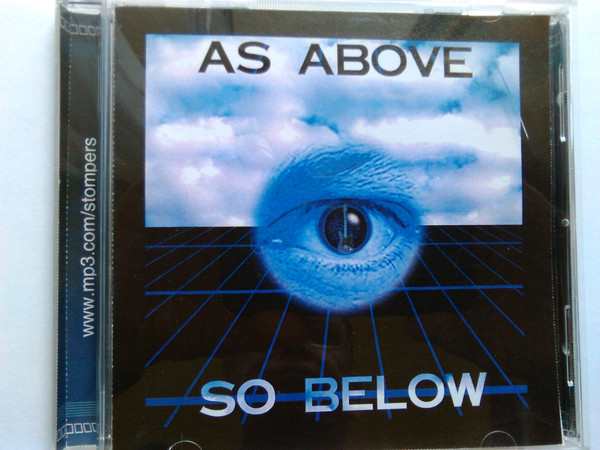
And, as a final point of note, MP3.com also let the bands just plain sell their own discs through the service. This is why, say, AFI’s “Totalimmortal” single released through MP3.com doesn’t follow this formula (though this was also likely a promotional thing, seeing as the band had buzz and a label behind them anyway).
A DAM cd is a rare gem, and remember, artists did also sell their own cds via MP3.com! I remember Playa-J – The Money shot (Bay area rap – Psychward label) being one I bought, among others – which was not a DAM cd just a homemade inkjet label cdr release in a clamshell case with sticker art on it. My memory is bad, it may have been from cdstreet (there’s another online indie music ghost of the past!).
Checking In on MP3.com’s Old Users
As I got to digging, I got curious as to what else I could find for the artists whose pages I ended up using on the original MP3.com post. I used these specific pages as the Wayback Machine often didn’t catch all of the page assets (and indeed, I had to be a little cheeky with the otherwise-intact PPK page because one of the bits of album art didn’t get saved either).
Regardless, I like to think I got a pretty decent collection of at least the more indie side of MP3.com. Some of these artists have pretty studied and fascinating histories on their own, so allow me to summarize and you can sample their work.
PPK

PPK was a Russian trance duo who were something of stars of MP3.com. From what I can gather, their 2001 song “ResuRection” was actually kind of a hit, being the first charting single ever from a Russian group on the UK Singles Chart (at #3) and going Silver for it. They also peaked at #26 on the Billboard Dance Club Songs chart over here. Hell, even the YouTube upload has 1.2mi views.
PPK petered out after the release of Reload, releasing a few more remixes throughout the 2000s and finally breaking up after a short domestic tour in 2010-2011. Still, not a bad showing for being totally indie.
Susan Greenbaum

She looks like a total mom on her artist page (and “adult contemporary”, read: momcore, doesn’t help), and that’s why I was curious. Susan’s a singer-songwriter from Virginia who apparently used to be a boardroom brawler at “Fortune 500 companies” (which ones, we’re not quite sure) before she went to play music instead. Not my usual thing, but she’s got a nice voice. I might just like female singers though.
Turns out, Susan Greenbaum is still around, at least according to her website (and yes, you can still buy Hey Hey Hey! after all these years), and the latest performance of hers I care to find was about two years ago. Apparently, she played at a show with Jason Mraz, who’s a name I’ve actually heard of, so go figure.
Acoustic Rescue
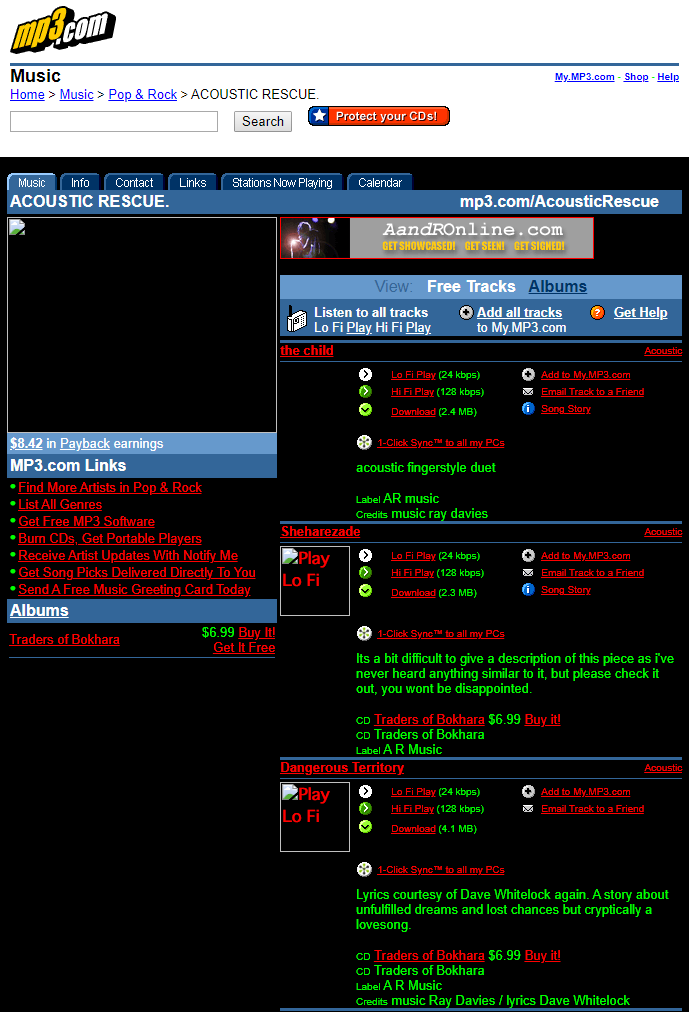
Amusingly enough, this one comes from South Wales, like everything in my life these days uwu. This is the group I was able to find the least about, but my searches weren’t totally fruitless. Seems this was an acoustic folk duo active in the very early 2000s made up of (and no, it’s not the ones you’re thinking of) brothers Ray and Spencer Davies. They’re not related to the Acoustic Rescue Unit or the Acoustic Rescue Group, who make up the searches if you go looking now.
Thankfully, while their MP3.com stuff is gone, the Internet Underground Music Archive kept a copy of some of their work, in case you’d like to sample their fingerpicking prowess. Track 05 (“Driftwood Sign”) also has vocals, if you’re into that. And for no reason at all other than secondary sources, here’s an article that mentioned them playing live at Burnley Mechanics almost 18 years ago to this day. Gotta love old news.
Ben Minnotte

What? I couldn’t just neglect the reason I looked into this in the first place.
Ben Minnotte started making so-called “music” in mid-2001 using only a few cheap guitars, a tape recorder, and Windows’ Sound Recorder, and later upgrading to an incredibly high-end Fostex X-14 multitracker. Typical of the bedroom strummers of the time, Ben’s deaf off-kilter Johnston-meets-Shaggs Jackson Browne impressions didn’t go too far, but what he’s released of it since then, I find rather charming. Whether or not he genuinely sold his soul to the man in his hole is up to interpretation.
Ben went on to record a few more musically-ept albums, namely 2006’s Greetings From Elderbush Gulch and 2010’s Minn-Knot, capping off with a few live performances around the Denver area before giving up the music thing altogether. Ben now runs a cult YouTube channel dedicated to bizarre tech and local TV refuse called the Oddity Archive and has featured his music semi-regularly on the show in incidental form. (Ben’s Music “Career” Vol. 4 is set to drop in March, according to the man himself. Fuckin’ hype.)

Skylab2000
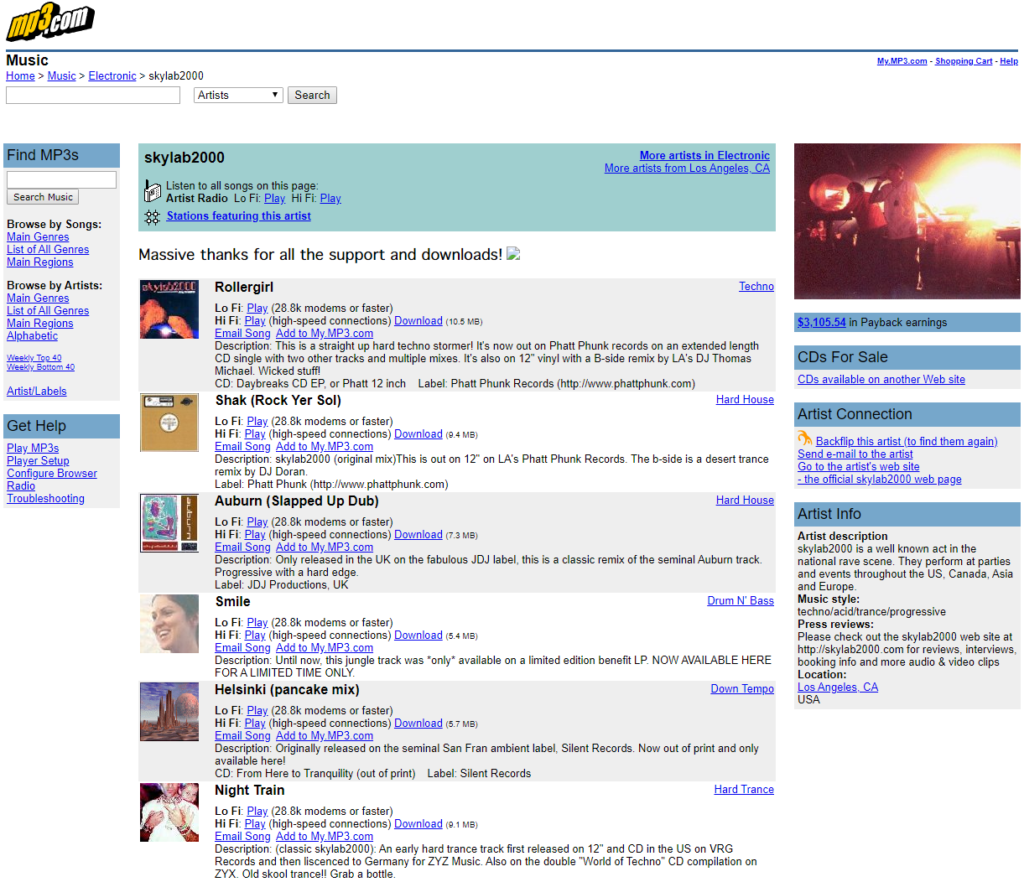
I’ve definitely saved the most interesting artist for last. It didn’t make much of a difference to me when I was putting the original article together, but as it turns out, Skylab2000 was actually a rather influential rave outfit, and its main man, the unfortunately now-deceased Dennis Barton, was something of a mad scientist.
Barton was raised in L.A.’s punk and post-punk scenes, working sound for venues where acts like the Minutemen, Husker Du, and X played. By 1991, the rave scene had started to take hold in the underground, and Barton, who was already something of a technical wizard, paired up with the new kid on the block, one Stuart Breidenstein, to play their own blend of intense-yet-trancey rave music.
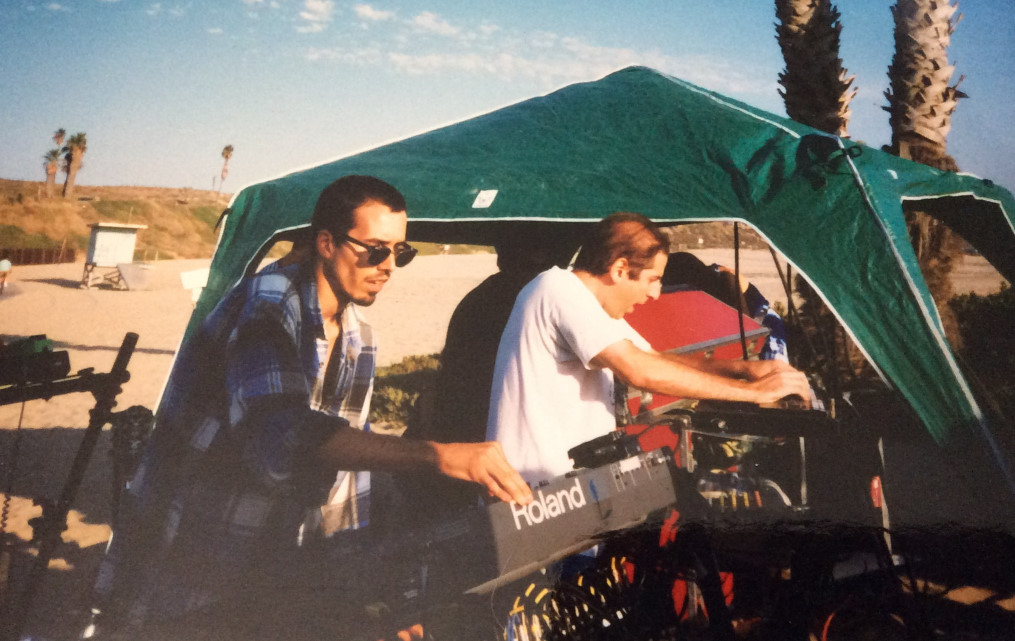
Dennis’ attraction to electronic music was natural and inexorable. As a little boy, he had a soldering iron and Radio Shack kits. He would take appliances apart and put them back together. He was fascinated by machines. It seemed he loved them because he understood them.
“He could buy a piece of shit car and he could make it run,” says Peter. “He had such an agile, inquiring mind. He built crystal radios and potato batteries. Everything was a puzzle that could be solved.”
Skylab2000 (named for the NASA satellite that fell out of the sky) would pop up in 1992 and set themselves apart by playing all of their music live, sometimes being the only proper live act on a bill of entirely DJs. From their first big show to long past the “Rollergirl” single, Skylab2000 burned through the SoCal rave scene in a flurry of jittery 303 basslines, Juno-106 sweeps, and ancient MS-DOS sequencers. At times, they played to 40,000 Turkish festivalgoers in one trip.
Skylab mostly retired in 2011 and Barton took up electrical engineering instead, where he spent his twilight years building gadgets and entertaining those he kept company with with his quiet wit and technical know-how. Barton died on February 4, 2017, and the world lost a mastermind. It’s a long read, but if you’re into electronica, this Medium article paints a really detailed picture of the man and I highly recommend it.
I’m still immensely fascinated by MP3.com. The fact that this site got as big as it did and then died as quickly as it lived and isn’t more fondly remembered astounds me. It was as if for a brief moment, music fulfilled its promise. Even if 99% of it was terrible, what the internet promised to do for music, it accomplished on all fronts. I might’ve had a different opinion if I were around to see it, but given the eulogizing in scattered comments, I don’t think so.
To date, nothing has quite replicated what MP3.com had. Bandcamp might have the uploads, but it doesn’t have the forums or the charts. Soundcloud and Spotify might take a more social focus, but that only goes so far in the landfill of the algorithm. MP3.com truly was something special. I’m glad a good few who were on there kept going after the site shut down.
For now, I’ll just go back to being a bedroom strummer myself, occasionally making bleepy-bloopy crispy-crunchy music and maybe getting it out there one day. Whatever I’m up to, though, I hope to keep the spirit of MP3.com alive.
